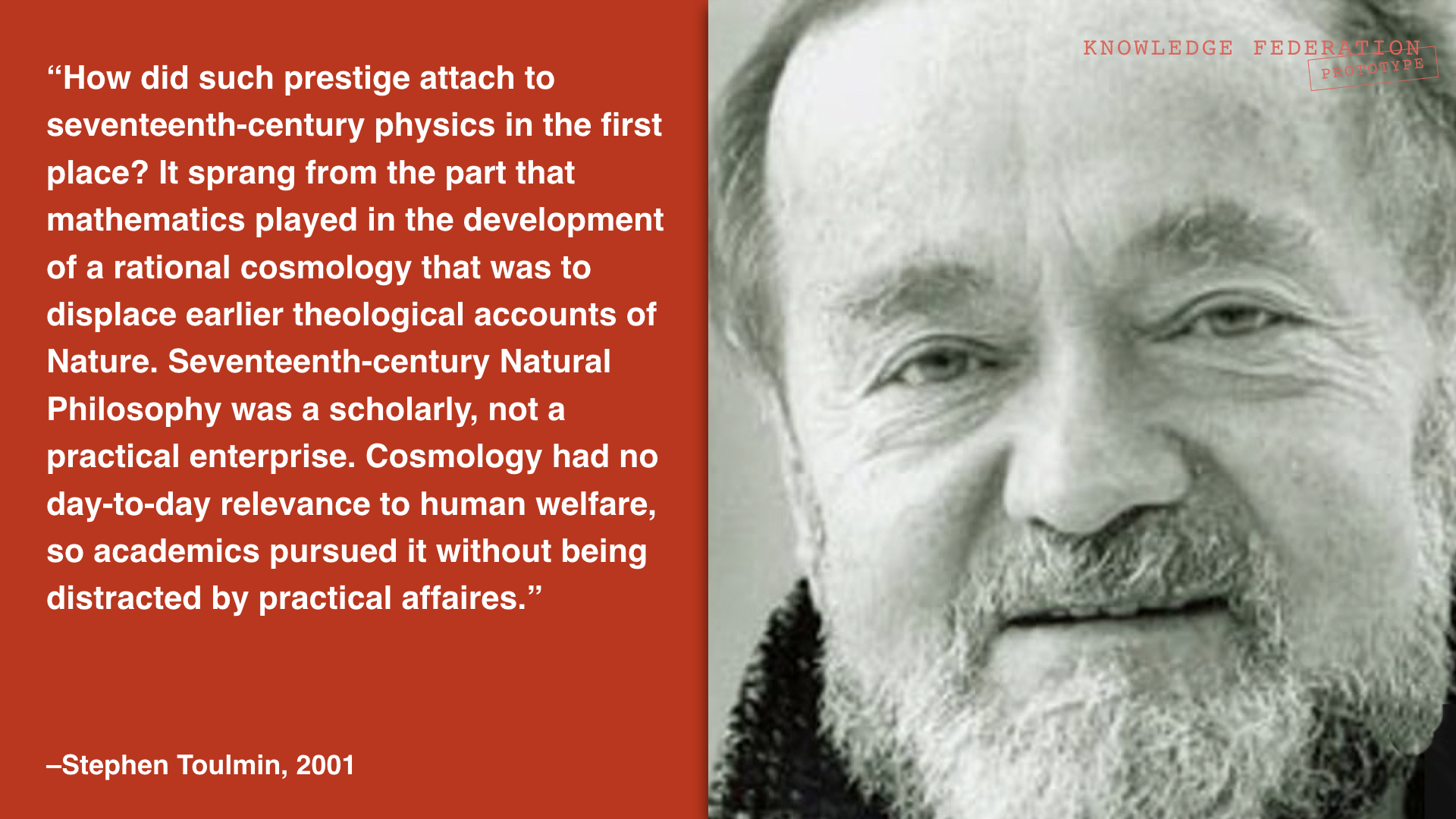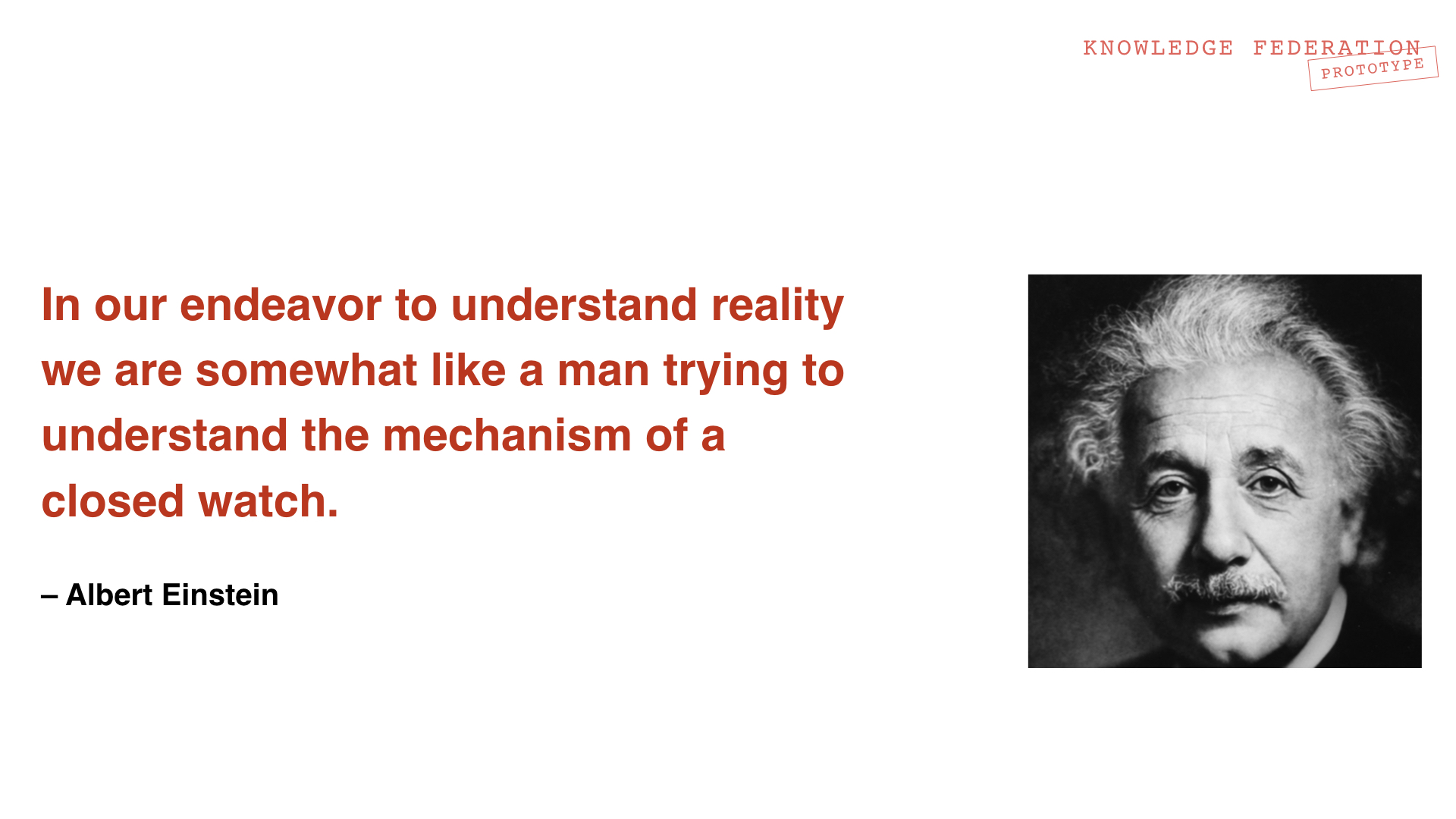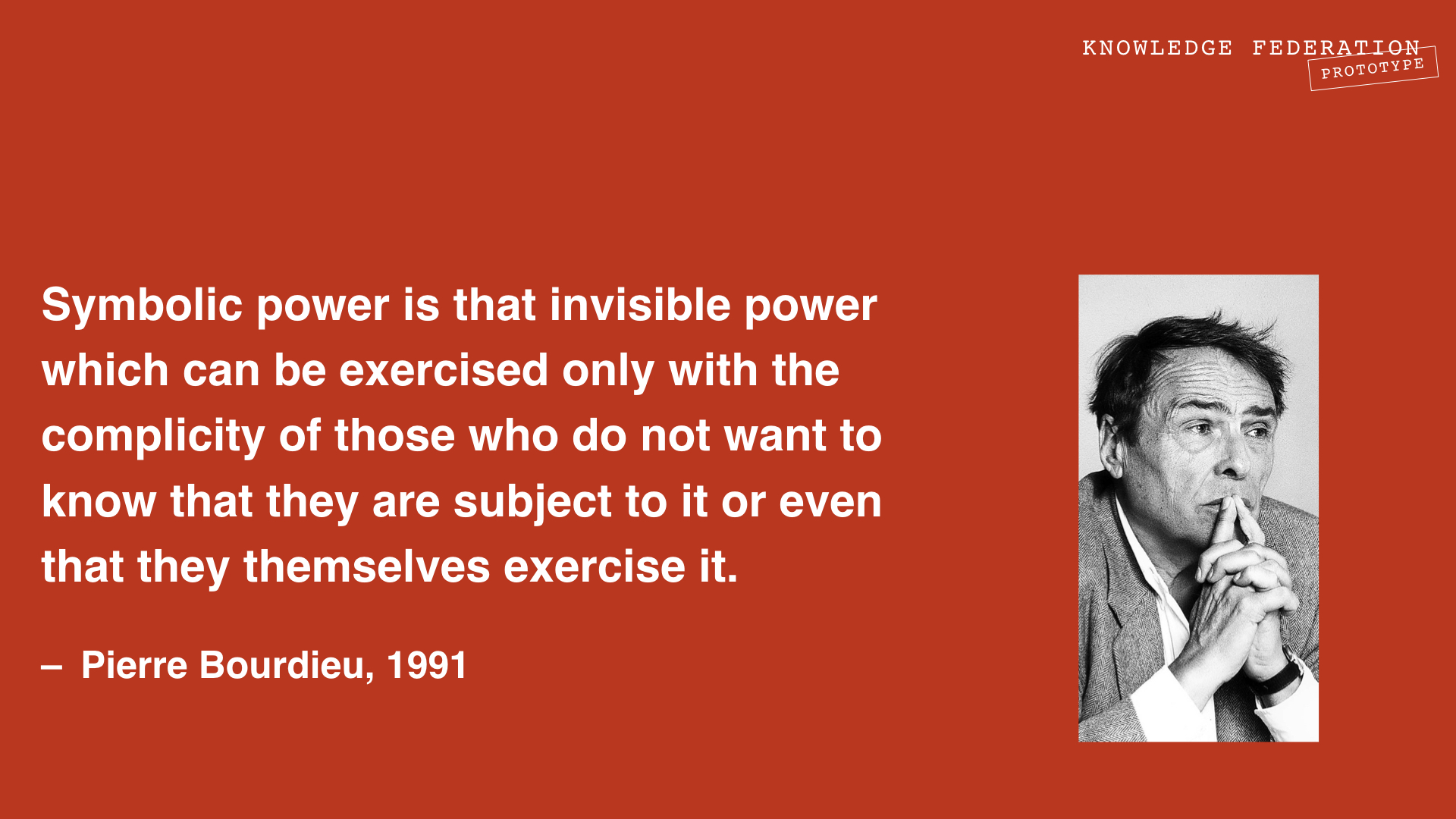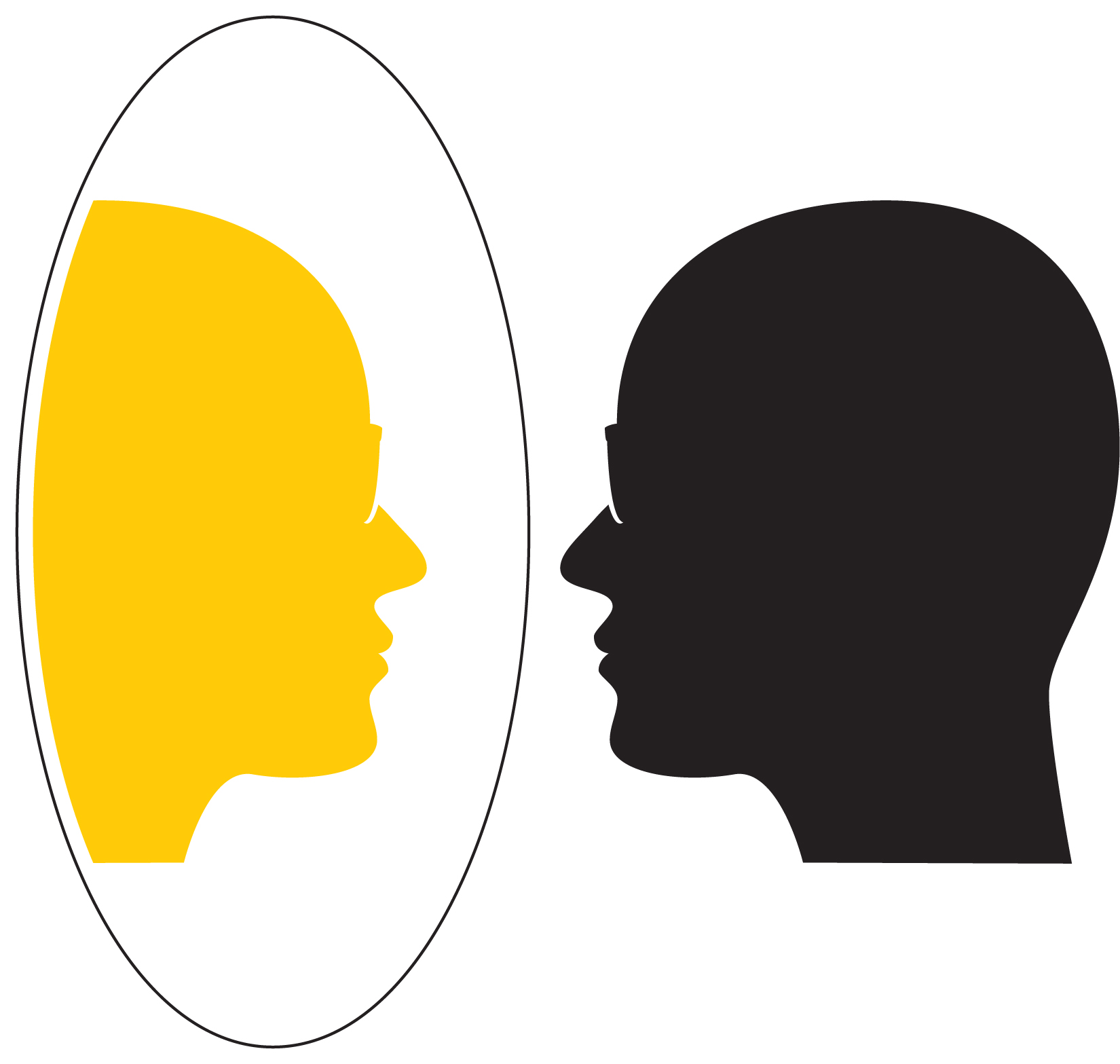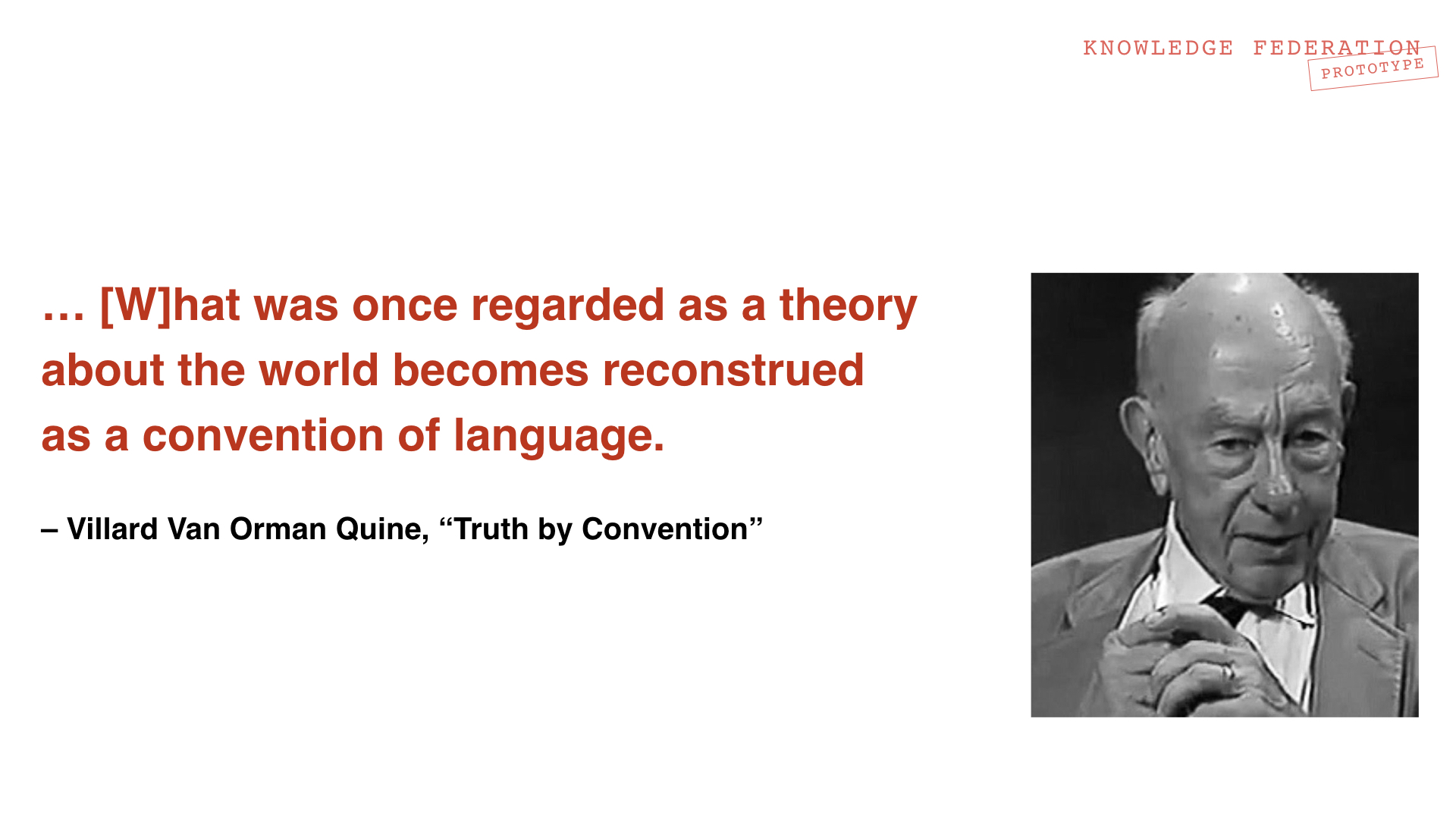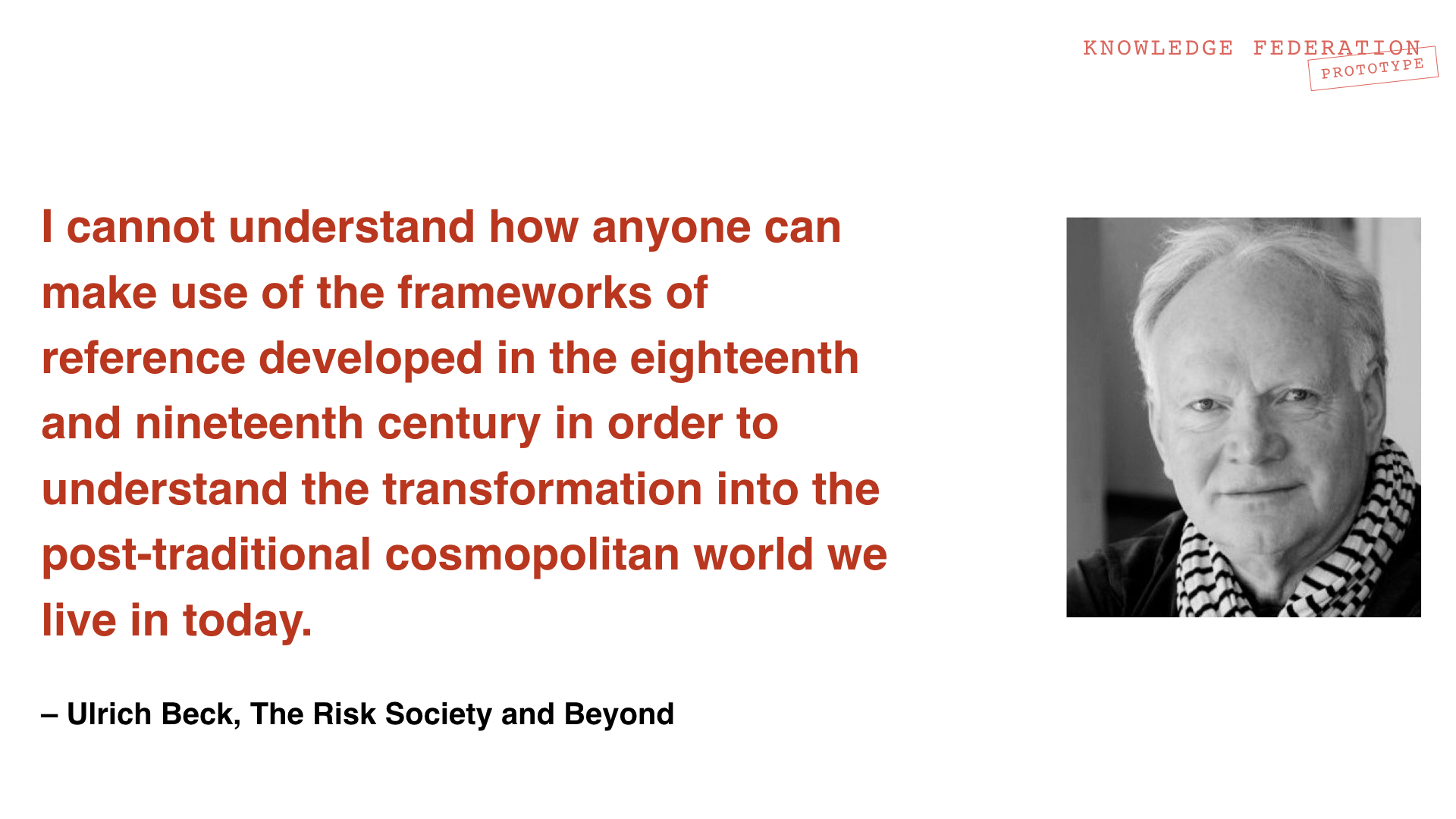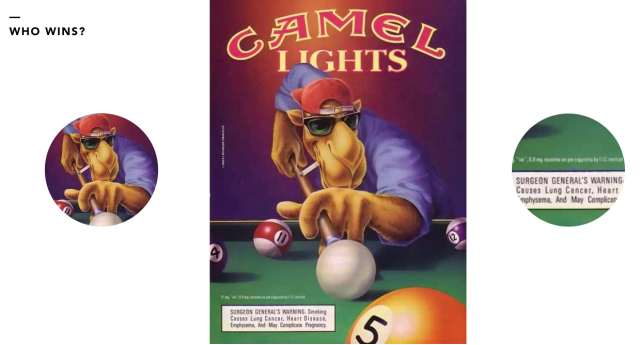Difference between revisions of "Holotopia"
m |
m |
||
| Line 452: | Line 452: | ||
<p>We may now perceive the earlier culture's "realities"—the belief in God and the Devil and the eternal punishments—as instruments of domination; <em>and</em> we may also see them as instruments of <em>socialization</em>, by which certain cultural values, and certain "human quality" are maintained. Both are correct, and both are relevant. </p> | <p>We may now perceive the earlier culture's "realities"—the belief in God and the Devil and the eternal punishments—as instruments of domination; <em>and</em> we may also see them as instruments of <em>socialization</em>, by which certain cultural values, and certain "human quality" are maintained. Both are correct, and both are relevant. </p> | ||
| − | <p>It is their historical <em>interplay</em> that is most interesting to study—how the best insights of the best among us, of the historical enlightened beings and "prophets", were diverted to serve the <em>power structure</em>, and turned something quite <em>opposite</em> from what was intended. In the Holotopia project we engage in this sort of study to reach the most <em>interesting</em> insight—What would our culture be like, if we <em>liberated</em> our communication from the <em>power structure</em> (reality construction)? | + | <p>It is their historical <em>interplay</em> that is most interesting to study—how the best insights of the best among us, of the historical enlightened beings and "prophets", were diverted to serve the <em>power structure</em>, and turned something quite <em>opposite</em> from what was intended. In the Holotopia project we engage in this sort of study to reach the most <em>interesting</em> insight—What would our culture be like, if we <em>liberated</em> our communication from the <em>power structure</em> (reality construction)?</p> |
<p>Some of the consequences of the historical error under consideration (that we adopted <em>reification</em> as "the relationship we have with information") include the following.</p> | <p>Some of the consequences of the historical error under consideration (that we adopted <em>reification</em> as "the relationship we have with information") include the following.</p> | ||
| Line 568: | Line 568: | ||
<p>The discussions of two examples—of [[design|<em>design</em>]] and [[implicit information|<em>implicit information</em>]]—which we offer separately, and here only summarize—will illustrate subtle yet central advantages this approach offers. Each of those [[keyword|<em>keywords</em>]] has been proposed to corresponding academic communities, and well received. Hence they are also [[prototype|<em>prototypes</em>]]—illustrating the possibility and the need for assigning purpose, by convention, to already <em>existing</em> academic fields and practices.</p> | <p>The discussions of two examples—of [[design|<em>design</em>]] and [[implicit information|<em>implicit information</em>]]—which we offer separately, and here only summarize—will illustrate subtle yet central advantages this approach offers. Each of those [[keyword|<em>keywords</em>]] has been proposed to corresponding academic communities, and well received. Hence they are also [[prototype|<em>prototypes</em>]]—illustrating the possibility and the need for assigning purpose, by convention, to already <em>existing</em> academic fields and practices.</p> | ||
| − | <p>The definition of <em>design</em> was proposed to the design community as a way to develop the logical foundations for design as an academic discipline. Concretely, the PhD Design online community asked the question, "What does it mean to give a doctorate in design? What shall we base it on?" | + | <p>The definition of <em>design</em> was proposed to the design community as a way to develop the logical foundations for design as an academic discipline. Concretely, the PhD Design online community asked the question, "What does it mean to give a doctorate in design? What shall we base it on?" The natural answer, the community leaders thought, would be classical philosophy. It is, after all, a <em>philosophy</em> doctorate we are awarding. We proposed that classical philosophy as foundation also has its problems. But that we can <em>design</em> a foundation—by using <em>truth by convention</em>, and the approach we've drafted. We offer the fact that Danish Designers chose our presentation to be repeated as opening keynote at their anniversary conference, out of so many at the triennial conference of European Academy of Design, as a confirmation that the design community found our proposal useful. </p> |
| + | |||
| + | <p>Its salient feature was to define <em>design</em> as "alternative to <em>tradition</em>", where <em>design</em> and <em>tradition</em> are two alternative ways to <em>wholeness</em>. <em>Tradition</em> relies on spontaneous, Darwinian-like evolution. We practice <em>design</em> when we consider ourselves accountable for the <em>wholeness</em> of the result. The point here is that when <em>tradition</em> cannot be relied on—<em>design</em> must be in place.</p> | ||
| + | |||
| + | <p>In the light of this definition, the bus with candle headlights can be understood as a result of a transition: We are no longer <em>traditional</em> (our technology has evolved by <em>design</em>); But we are not yet <em>designing</em>—because "the relationship we have with information" is still <em>traditional</em>. The core of our proposal can now be understood as the proposal to <em>complete</em> modernization. <em>Truth by convention</em> can be understood as a fundamental or academic technical device by which this can be done—in the manner of <em>continuing</em> and further developing the core tenets of the academic tradition.</p> | ||
| + | |||
| + | <p>The definition of <em>implicit information</em> and of <em>visual literacy</em> as "literacy associated with <em>implicit information</em> for the International Visual Literacy Association was in spirit similar—and the point was similarly central.</p> | ||
| + | <p> | ||
| + | [[File:Whowins.jpg]] | ||
| + | </p> | ||
| + | <p>We showed the above <em>ideogram</em> as depicting a situation where two kinds of information—the <em>explicit information</em> with explicit, factual and verbal warning in a black-and-white rectangle, and the visual and "cool" rest—meet each other in a direct duel. Our immeiate point was that the <em>implicit information</em> wins "hands down" (or else this would not be a cigarette advertising). Our larger point was that while our legislation, ethical sensibilities and "official" culture at large are focused on <em>explicit information</em>, our culture is largely created through subtle <em>implicit information</em>. Hence we need a <em>literacy</em> to be able to decode those messages. It is easy to see how this line of thought and action directly continues what's been told above about the negative consequences of <em>reification</em>. </p> | ||
Revision as of 12:12, 25 August 2020
Contents
HOLOTOPIA
An Actionable Strategy
Imagine...
You are about to board a bus for a long night ride, when you notice the flickering streaks of light emanating from two wax candles, placed where the headlights of the bus are expected to be. Candles? As headlights?
Of course, the idea of candles as headlights is absurd. So why propose it?
Because on a much larger scale this absurdity has become reality.
The Modernity ideogram renders the essence of our contemporary situation by depicting our society as an accelerating bus without a steering wheel, and the way we look at the world, try to comprehend and handle it as guided by a pair of candle headlights.
Scope
"Act like as if you loved your children above all else",Greta Thunberg, representing her generation, told the political leaders at Davos. Of course the political leaders love their children—don't we all? But what Greta was asking them to do was to 'hit the brakes'; and when the 'bus' they are believed to be 'driving' is inspected, it becomes clear that its 'brakes' too are missing. The job of the politicians is to keep the 'bus on course' (the economy growing) for yet another four-year term. Changing the 'course', or the system, is well beyond what they can do, or even conceive of.
The COVID-19 pandemic may require that we update some of our systems, and ways in which we collaborate—now.
So who, what institution or system, will lead us through our next evolutionary task—where we will learn how to recreate the systems in which we live and work; first in knowledge work, and then beyond?
Both Jantsch and Engelbart believed that "the university" would have to be the answer; and they made their appeals accordingly. But the universities ignored them—just as they ignored Bush and Wiener before them, and others who followed.
Why?
Isn't restoring agency to information and power to knowledge a task worthy of academic attention?
It is tempting to conclude that the university institution followed the general trend, and evolved as a power structure. But to see solutions, we need to look at deeper causes.
We readily find them in the way in which the university institution developed.
The academic tradition did not originate as a way to practical knowledge, but to freely pursue knowledge for its own sake, in a way that is disciplined only by the knowledge of knowledge (what we learned about the meaning and purpose of information and knowledge, and about their relationship with truth and reality), which the academic tradition has been developing since antiquity. Wherever the free-yet-disciplined pursuit of knowledge took us, we followed. And as we pointed out in the opening paragraphs of this website, by highlighting the iconic image of Galilei in house arrest,
it was this free pursuit of knowledge that led to the last "great cultural revival".
We asked:
Could a similar advent be in store for us today?
The key to the answer is in the historicity of "the relationship we have with knowledge"—which we let Stephen Toulmin represent. And that is what we here focus on.
To reach an answer, we follow the lead that Stephen Toulmin left us in the above excerpt, quoted from his last book, "Return to Reason". At the point where the modern university was taking shape, it was the Church and the tradition that had the prerogative of telling the people how to conduct their daily affairs and what to believe in. And as the image of Galilei in house arrest might suggest—they held onto that prerogative most firmly! But the censorship and the prison could not stop an idea whose time had come. They were unable to prevent a completely new way to explore the world to transpire from astrophysics, where it originated, and transform first our pursuit of knowledge—and then our society and culture at large.
It is therefore natural that at the universities we consider the curation of this approach to knowledge to be our core role in our society. At the universities, we are the heirs and the custodians of a tradition that has historically led to some of the most spectacular evolutionary leaps in human history. Naturally, we remain faithful to that tradition. We do that by meticulously conforming to the methods and the themes of interests of mathematics, physics, philosophy, biology, sociology, philosophy and other traditional academic disciplines, which, we believe, embody the highest standards of knowledge of knowledge. People can learn practical skills at professional schools. It is the university education and the university education alone that can give them up-to-date knowledge of knowledge—and with it the ability to pursue knowledge in the right way in any domain of interest.
We must ask:
Can the evolution of the academic tradition, and of our handling of information and knowledge, continue still further?
Could the academic tradition, once again, give us a completely new way to explore the world?
Can the free pursuit of knowledge, curated by the knowledge of knowledge, once again lead to "a great cultural revival" ?
Can "a great cultural revival" begin at the university?
Diagnosis
In the course of our modernization, we made a fundamental error—whose disastrous long-term consequences cannot be overstated.
From the traditional culture we have adopted a myth far more disruptive of modernization than the creation myth—the myth is that "truth" means "correspondence with reality"; and that the purpose of information, and of our pursuit of knowledge, is to "know reality objectively", as it truly is.
During modernization, we only learned to use this myth in a new way. As the members of the homo sapiens species, we've been told, we have the evolutionary prerogative to reach "objective" or "true" knowledge by using our rational faculties (not by Divine revelation)—and based on it, to direct our personal affairs and our society, by making rational decisions. Give us a "true picture of reality"—and we'll know what is best for us, and what is to be done.
It may take a moment of reflection to see how much this myth permeates our popular culture, our society and institutions; how much it marks "the relationship we have with information"—in all its various manifestations.
This error has subsequently been detected and reported, but not corrected. (Yes, once again we witness that the link between information and action has been severed.)
It has turned out that it is simply impossible to open up the 'mechanism of nature', and verify that our ideas and models correspond to the real thing!
The "reality", the 20th century's scientists and philosophers found out, is not something we discover; it is something we construct.
Our "construction of reality" turned out to be a complex and most interesting process, in which our cognitive organs and our society or culture interact. From the cradle to the grave, through innumerably many "carrots and sticks", we are socialized to organize and communicate our experience in a certain specific way.
The vast body of research, and insights, that resulted in this pivotal domain of interest, now allows us and indeed compels us to extend the power structure view of social reality a step further, into the cultural and the cognitive realms.
In "Social Construction of Reality", Berger and Luckmann left us an analysis of the social process by which the reality is constructed—and pointed to the role that "universal theories" (which determine the relationship we have with information) play in maintaining a given social and political status quo. An example, but not the only one, is the Biblical worldview of Galilei's persecutors.
To organize and sum up what we above all need to know about the nature of socialization, and its relationship with power, we created the Odin–Bourdieu–Damasio thread, consisting of three short real-life stories or vignettes. (The threads are a technical tool we developed based on Vannevar Bush's idea of "trails"; we call them "threads" because we further weave them into patterns.) These insights are so central to holotopia, that we don't hesitate to summarize them also here, however briefly.
The first, Odin the Horse story, points to the nature of turf struggle, by telling a story that illustrates the turf behavior of horses.
The second story, involving Pierre Bourdieu observing the modernization of Algerian society during and after the 1954-62 Algerian War of Independence, invite us to look at the human culture as, in effect, a turf—similar to the meadow where Odin the Horse history is played out, only more complex—as much as our culture is more complex than the culture of the horses. This story allows us to see how much of what we call "culture" can emerge through sophisticated turf struggle—where no more than "symbolic power" is used.
Bourdieu used interchangeably two keywords—"field" and "game"—to refer to this "turf". Calling it a field invokes the association with something akin to a magnetic field, which orients people's seemingly random or "free" behavior, even without anyone noticing. Calling it a game suggests something that structures or "gamifies" our social existence, by giving everyone a certain role. Those roles, Bourdieu observed, tend to be transmitted from one body to the next—usually without anyone noticing the subtle power play, or "turf behavior", they engender (Bourdieu used the keyword "habitus" to point to the embodied predispositions to act and think in a certain way, which correspond to a role). Everyone bows to the king, and I naturally do that too. For the socialized experience—that our social and natural "reality" is the only one that is possible (which plays a key role in socialization, determining the very structure and the rules of the game), Bourdieu used the keyword doxa.
Antonio Damasio, as cognitive neuroscientist, completes this thread by explaining that we, humans, are not the rational decision makers, as the founding fathers of the Enlightenment made us believe. Each of us has an embodied cognitive filter, which determines what options we rationally consider. This cognitive filter can be programmed through socialization. Damasio's insight shows that socialization, and socialized reality construction, carry far more power than the creators of our laws and institutions were able to imagine.
But socialized reality construction is not only or even primarily an instrument of power struggle. It is, indeed, also the way in which the traditional culture reproduces itself and evolves. It has served as 'cultural DNA', the only one that was available.
We may now perceive the earlier culture's "realities"—the belief in God and the Devil and the eternal punishments—as instruments of domination; and we may also see them as instruments of socialization, by which certain cultural values, and certain "human quality" are maintained. Both are correct, and both are relevant.
It is their historical interplay that is most interesting to study—how the best insights of the best among us, of the historical enlightened beings and "prophets", were diverted to serve the power structure, and turned something quite opposite from what was intended. In the Holotopia project we engage in this sort of study to reach the most interesting insight—What would our culture be like, if we liberated our communication from the power structure (reality construction)?
Some of the consequences of the historical error under consideration (that we adopted reification as "the relationship we have with information") include the following.
- Undue limits to creativity. On the one side we have a vast global army of selected, specially trained and publicly sponsored creative workers having to produce more articles in the traditional academic fields as the only way to be academically legitimate. On the other side of our society, and of our planetary ecosystem, in dire need for new ideas, for new ways to be creative. Imagine the amount of benefit that could be reached in that situation— by liberating the contemporary Galilei to once again bring completely new ways to create and handle knowledge!
- Severed link between information and action. The (perceived) purpose of information being to complete the 'reality puzzle'—every new piece appears to be equally relevant as the others, and necessary for completing this project. In the sciences, and in media informing, we keep producing large volumes of data every minute—as Neil Postman diagnosed. As the ocean of documents rises, we begin to drown in it. Informing us the people in some functional way becomes impossible.
- Loss of cultural heritage. We may as well here focus on the cultural heritage whose purpose was to cultivate "human quality". Already this trivial observation might suffice to make a point: With the threat of eternal fire on the one side, and the promise of heavenly pleasures on the other, a 'field' is created that orients the people's behavior toward what is considered more ethical. To see that this is, however, only the tip of an iceberg, join us for a minute on a thought experiment—an imaginary visit to a cathedral. There is awe-inspiring architecture; frescos of masters of old on the walls; we hear Bach cantatas; and there's of course the ritual. All this comprises an ecosystem—where emotions such as respect and awe make one to listening and learning in certain ways, and advancing further. The complex dynamics of our cultural ecosystem, and the way we handled it, bear a strong analogy with our biophysical environment, with one notable difference: There we have neither concepts nor methods, we have nothing equivalent to the temperature and the CO2 measurements, to even diagnose the problems—not to speak about proposing legislation and remedies.
- "Human quality" abandoned to power structure. Advertising is everywhere. And explicit advertising too is only a tip of an iceberg, which consists of a variety of ways in which "symbolic power" is being used to socialize us in ways that suit the power structure interests—as a rule without anyone's awareness, as Bourdieu observed. The organized and deliberate, and even research-based manipulation should, however, not be underestimated. And here the person and the story of Edward Bernays, Freud's American nephew who became "the pioneer of modern public relations and propaganda", is iconic.
A conclusion suggests itself.
The Enlightenment did not liberate us from power-related reality construction, as it is believed.
Our socialization only changed hands—from the kings and the clergy, to the corporations and the media.
Ironically, our carefully cultivated self-identity—as "objective observers of reality"—keeps us, academic researchers, and information and knowledge at large, on the 'back seat'—and without impact. We can, and do, diagnose problems; but we cannot be an active agent in their solution.
Remedy
In the spirit of the holoscope, we introduce an answer by a metaphorical image, the Mirror ideogram. As the ideograms tend to, the Mirror ideogram too renders the essence of a situation, in a way that points to a way in which the situation may need to be handled—and to some subtler points as well.
The main message of the Mirror ideogram is that the free-yet-methodical pursuit of knowledge, which distinguishes the academic tradition, has brought us to a certain singular situation, which requires that we respond in a certain specific way. The mirror is inviting us, and indeed compelling us to interrupt the busy work we are doing, and to self-reflect in a similar manner and about similar themes as Socrates taught, at the point of the Academia's inception many centuries ago.
When we look at a mirror, we see ourselves—and we see ourselves in the world. The mirror metaphor is intended to reflect two insights, or two changes in our habitual self-identity and self-perception, which a self-reflection about the underlying issues of meaning and purpose, based on the academic insights reached in the past century, will lead us to.
The first insight is that we must put an end to reification. Seeing ourselves in the mirror is intended to signify that the methods and vocabularies of the academic disciplines were not something that objectively existed, and was only discovered. We (the founders of our disciplines) created them. For many reasons, some of which have been stated above, we must liberate ourselves, and the people, from reification of our institutions, our worldviews, and of the very concepts we use to communicate.
The liberation from reification is the liberation from the systems we have been socialized to accept as "reality"—and hence also from the power structure.
The second consequence is the beginning of accountability. The world we see ourselves in is a world that needs new ideas, new ways of thinking, and of being. It's a world in dire need for creative yet methodical and accountable change. We see the key role that information and knowledge have in that world, and that situation.
We see ourselves holding the key.
An important point here is that the academia finds itself in a much larger and more important role than the one it was originally conceived for. The reason is a historical accident: The successes of science discredited the foundations, beginning from its socialized reality, on which the traditional culture relied in its function.
The key question then presents itself:
How should we continue?
Yes, we do want to respond to our new role; indeed we have to, because nobody else can.
At the same time—we do want to continue our tradition, of free–yet-methodical pursuit of knowledge for its own sake.
The most interesting insight reflected by the mirror is that we can do both. There is a way to both take care of the fundamental problem (liberate ourselves and the people from reification) and respond to this larger role.
Philosophically, and practically, this seemingly impossible or 'magical' way out of our double-bind, is to walk through the mirror. This can be done in only two steps.
The first is to use what philosopher Villard Van Orman Quine called "truth by convention"—which we adapted as one of our keywords.
Quine opened "Truth by Convention" by observing:
"The less a science has advanced, the more its terminology tends to rest on an uncritical assumption of mutual understanding. With increase of rigor this basis is replaced piecemeal by the introduction of definitions. The interrelationships recruited for these definitions gain the status of analytic principles; what was once regarded as a theory about the world becomes reconstrued as a convention of language. Thus it is that some flow from the theoretical to the conventional is an adjunct of progress in the logical foundations of any science."
But if truth by convention has been the way in which the sciences augment the rigor of their logical foundations—why not use it to update the logical foundations of knowledge work at large?
As we are using this keyword, the truth by convention is the kind of truth that is common in mathematics: "Let X be Y. Then..." and the argument follows. Insisting that x "really is" y is obviously meaningless. A convention is valid only within a given context—which may be an article, or a theory, or a methodology.
The second step is to use truth by convention to define an epistemology.
We defined design epistemology by turning the core of our proposal (to change the relationship we have with information—by considering it a human-made thing, and adapting information and the way we handle it to the functions that need to be served) into a convention.
Notice that nothing has been changed in the traditional-academic scheme of things. The academia has only been extended; a new way of thinking and working has been added to it, for those who might want to engage in that new way. On the 'other side of the mirror', we see ourselves and what we do as (part of) the 'headlights' and the 'light'; and we self-organize, and act, and use our creativity freely-yet-responsibly, and create a variety of new methods and results—just as the founding father of science did, at the point of its inception.
In the "Design Epistemology" research article (published in the special issue of the Information Journal titled "Information: Its Different Modes and Its Relation to Meaning", edited by Robert K. Logan) where we articulated this proposal, we made it clear that the design epistemology is only one of the many ways to manifest this approach. We drafted a parallel between the modernization of science that can result in this way and the emergence of modern art: By defining an epistemology and a methodology by convention, we can do in the sciences as the artists did—when they liberated themselves from the demand to mirror reality, by using the techniques of Old Masters.
As the artists did—we can become creative in the very way in which we practice our profession.
To complete this proposal—to the academia to 'step through the mirror' and to guide our society to a new reality—we developed the two prototypes—of the holoscope (to model the academic reality on the other side) and of the holotopia (to model the social reality).
Technically or academically, each of them is a model of a paradigm—hence we have a paradigm in knowledge work ready to foster for a larger societal paradigm—exactly as the case was in Galilei's time.
We bring these lofty and "up in the air" possibilities down to earth, by discussing one of the more immediately practical consequences of the proposed course of action.
Beck continued the above observation:
"Max Weber's 'iron cage' – in which he thought humanity was condemned to live for the foreseeable future – is for me the prison of categories and basic assumptions of classical social, cultural and political sciences."
Reification is what keeps us in 'iron cage'.
Truth by convention is an academically rigorous way out.
The keywords we've been using all along are all defined by convention.
The discussions of two examples—of design and implicit information—which we offer separately, and here only summarize—will illustrate subtle yet central advantages this approach offers. Each of those keywords has been proposed to corresponding academic communities, and well received. Hence they are also prototypes—illustrating the possibility and the need for assigning purpose, by convention, to already existing academic fields and practices.
The definition of design was proposed to the design community as a way to develop the logical foundations for design as an academic discipline. Concretely, the PhD Design online community asked the question, "What does it mean to give a doctorate in design? What shall we base it on?" The natural answer, the community leaders thought, would be classical philosophy. It is, after all, a philosophy doctorate we are awarding. We proposed that classical philosophy as foundation also has its problems. But that we can design a foundation—by using truth by convention, and the approach we've drafted. We offer the fact that Danish Designers chose our presentation to be repeated as opening keynote at their anniversary conference, out of so many at the triennial conference of European Academy of Design, as a confirmation that the design community found our proposal useful.
Its salient feature was to define design as "alternative to tradition", where design and tradition are two alternative ways to wholeness. Tradition relies on spontaneous, Darwinian-like evolution. We practice design when we consider ourselves accountable for the wholeness of the result. The point here is that when tradition cannot be relied on—design must be in place.
In the light of this definition, the bus with candle headlights can be understood as a result of a transition: We are no longer traditional (our technology has evolved by design); But we are not yet designing—because "the relationship we have with information" is still traditional. The core of our proposal can now be understood as the proposal to complete modernization. Truth by convention can be understood as a fundamental or academic technical device by which this can be done—in the manner of continuing and further developing the core tenets of the academic tradition.
The definition of implicit information and of visual literacy as "literacy associated with implicit information for the International Visual Literacy Association was in spirit similar—and the point was similarly central.
We showed the above ideogram as depicting a situation where two kinds of information—the explicit information with explicit, factual and verbal warning in a black-and-white rectangle, and the visual and "cool" rest—meet each other in a direct duel. Our immeiate point was that the implicit information wins "hands down" (or else this would not be a cigarette advertising). Our larger point was that while our legislation, ethical sensibilities and "official" culture at large are focused on explicit information, our culture is largely created through subtle implicit information. Hence we need a literacy to be able to decode those messages. It is easy to see how this line of thought and action directly continues what's been told above about the negative consequences of reification.


